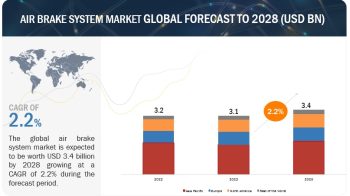The feed phosphates market was valued at USD 2.18 billion in 2017; this is projected to reach USD 2.80 billion by 2024, at a CAGR of 3.7% during the forecast period. Feed phosphates are used to optimize the nutritional value of feed and further enhance the quality of meat and dairy products, optimize tenderness in meat, increase selenium content in eggs, and high calcium content in milk. Therefore, the rise in consumption of meat & dairy products and prevalence of diseases in livestock are the factors driving this market.
High threat of diseases in livestock
The outbreak of diseases such as avian flu, BSE (bovine spongiform encephalopathy), and SARS (severe acute respiratory syndrome) not only affect livestock breeding and the economy, but also pose a serious threat to human health. The emergence of swine diarrhea in the US caused significant losses to swine farmers. Moreover, countries such as China, India, and Indonesia are constantly facing outbreaks of avian flu and swine flu, due to the hot and humid climatic conditions. Meat vendors, meat processors, wholesalers, retailers, and ultimately livestock growers suffer financial losses, due to the culling of disease-affected animals, which further lead to a drop in animal productivity. The foot and mouth disease (FMD) outbreak in the UK in 2007 led to losses of USD 3.7 billion to the livestock sector. The avian flu outbreak of 2013 resulted in economic losses worth USD 6.1 billion in China. Nearly, 130 people were infected in mainland China during this outbreak, according to the UN.
To know about the assumptions considered for the study, download the PDF brochure
The usage of feed phosphates in such cases proved to be an effective medium to reduce such outbreaks by improving animal health with the provision of necessary nutrients. Calcium and phosphorus are two important macro-minerals required for the proper performance, growth, health, and production of livestock. Most feed ingredients from plant sources are inadequate in meeting such requirements, and hence, the inclusion of feed phosphates are important for the maintenance of animal health in such cases. This is one of the main factors that drive the demand for feed phosphates in the market.
How is the excessive proportion of feed phosphates in various feed products creating challenges for the growth of the market?
Despite feed phosphates being used as a key component to maintain animal health and productivity, their usage above certain limits could be toxic to animals. For instance, excessive intake of phosphorus can interfere with both calcium and magnesium absorption. Excessive calcium intake by consuming dicalcium phosphate, monocalcium phosphate, mono-dicalcium phosphate, and tricalcium phosphate can lead to osteopetrosis, vertebral ankyloses, and degenerative osteoarthritis in cattle. It also results in reduced feed intake, resulting in lower milk yields in cattle. Excessive dietary phosphorus results in weak bones, downer cow syndrome, and urinary calculi. Such toxicities due to excessive intake of minerals such as calcium and phosphorus are generally observed to decrease animal performance, and even lead to anorexia, weight loss, and diarrhea.
However, because mineral deficiencies in animals are more common occurrences in comparison to toxicities, there is a general tendency to easily exceed minimum animal requirements. In such cases, it becomes imperative to determine if dietary mineral concentrations exceed the maximum tolerance levels of the cattle. Mineral toxicities, which could be a result of excessive consumption of feed or water, may then have significant degrading effects on animal health and performance. Therefore, an excessive proportion of feed phosphates in animal feed could cause deteriorating effects on animals and severe toxicities.
For more details on this research, Request Sample of this Report
The contributors involved in the value chain of the feed phosphates market include raw material suppliers, R&D institutes, feed phosphate distributors, livestock producers, feed manufacturers, government bodies & regulatory associations, and feed phosphate manufacturing companies. The manufacturing companies in the market include The Mosaic Company (US), Phosphea (France), Nutrien Ltd. (Canada), OCP Group (Morocco), Yara International ASA (Norway). The government bodies & regulatory associations include such as the US Department of Agriculture (USDA), the Food and Drug Administration (FDA), and the European Food Safety Authority (EFSA).


